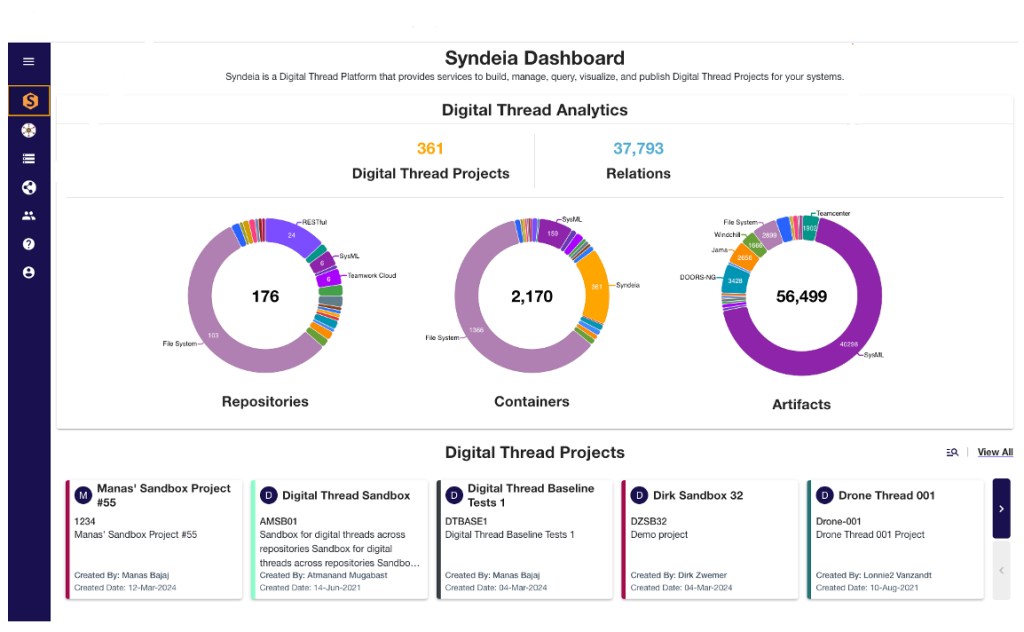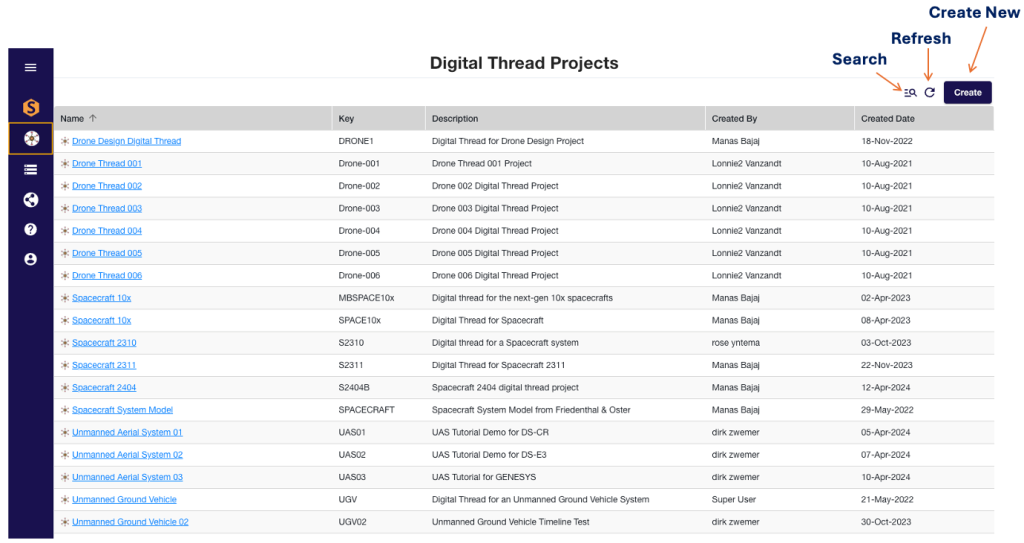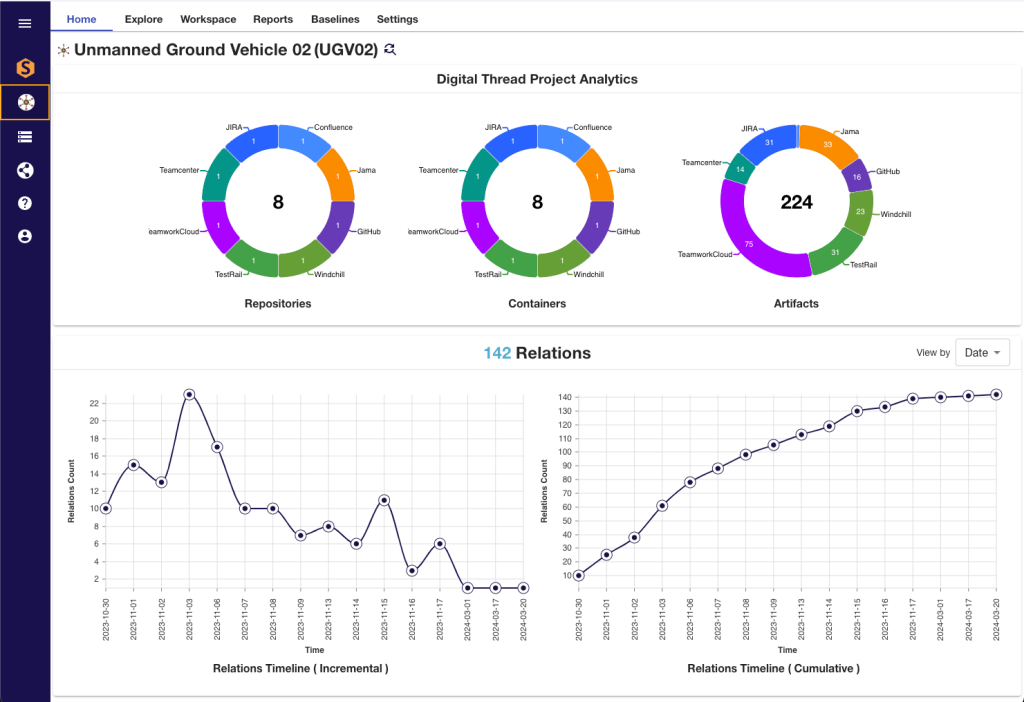As part of the release of Syndeia 3.6, we are publishing a series of blog posts highlighting the new features supporting practical implementation of digital threads in system development.
In Part 1, we described several reasons to implement new security at the Digital Thread Project (DTP) level
- To allow multiple independent project teams to share common Syndeia infrastructure
- To reduce the amount of irrelevant data a user must wade through to get to their own work
- To prevent a user from accessing information they are not authorized for
This last is the most critical and digital threads introduce an obvious vulnerability. We all understand that a fusion of data may be more security-sensitive than the individual elements. For example, a component modeled in a SysML or PLM tool may be confidential, but combined with the software to operate that component, requirements that describe its purpose or test results that describe its effectiveness, the information value is increased enormously.
And that is what digital threads are designed to do. Additional access restrictions at the DTP level directly address the security issues adherent in connecting data.
In this post, we will review the information a typical user is presented with when they log into the Syndeia Web Browser in the Syndeia 3.6 release, allowing them to select the project they will be working with.

Figure 1 shows the screen all users see once they have logged into the Syndeia Web Browser. At the top is a display of aggregate metrics for the Syndeia database. While a nice illustration of the extent of adoption of digital engineering by the organization, these numbers will be of minimal interest for most users. Of greater importance is the row of Digital Thread Projects across the bottom. These are the DTPs that the user (based on their Syndeia login credentials) has been assigned some degree of access to. Review Part 2 for a discussion of project privileges.
If there are more than five available DTPs, there are buttons to shift the row left or right and a search icon. Clicking on a project will take the user directly to the DTP Dashboard for that project (see Figure 3). Alternately, clicking View All or the Digital Thread Projects icon in the main control bar will take the user to a flat list of projects.

Figure 2 shows the list of projects to which the user has access, with Name, Key, Description, Created By and Created Date information. There are icons at the top right for Search and Refresh and a button to create a new project. As described in Part 2, the creator of a new project is automatically assigned all privileges for that project and can add other users. The user can also sort, filter and rearrange table columns by clicking on the three-dot ellipsis on the column headings. Clicking on a project name opens the Digital Thread Project Dashboard for that project.

Figure 3 provides a real-time snapshot of the project status for the project lead and other users in terms of the number of artifacts, relations and other data elements that have been added to the digital thread. At the bottom, there are timelines (incremental and cumulative) of the inter-model relations included, highlighting integrating engineering activity levels over time and providing valuable information relative to project schedule, cost and risk.
The top menu bar (Explore, Workspace, Reports and Baselines) provide links to a wide range of project-specific reports and analysis new in Syndeia 3.6. The next four parts of this blog series will look at some of these in greater detail.
Other parts in this series:
- Syndeia 3.6 Release, Part 3: Digital Thread Project Dashboard (This Post)
